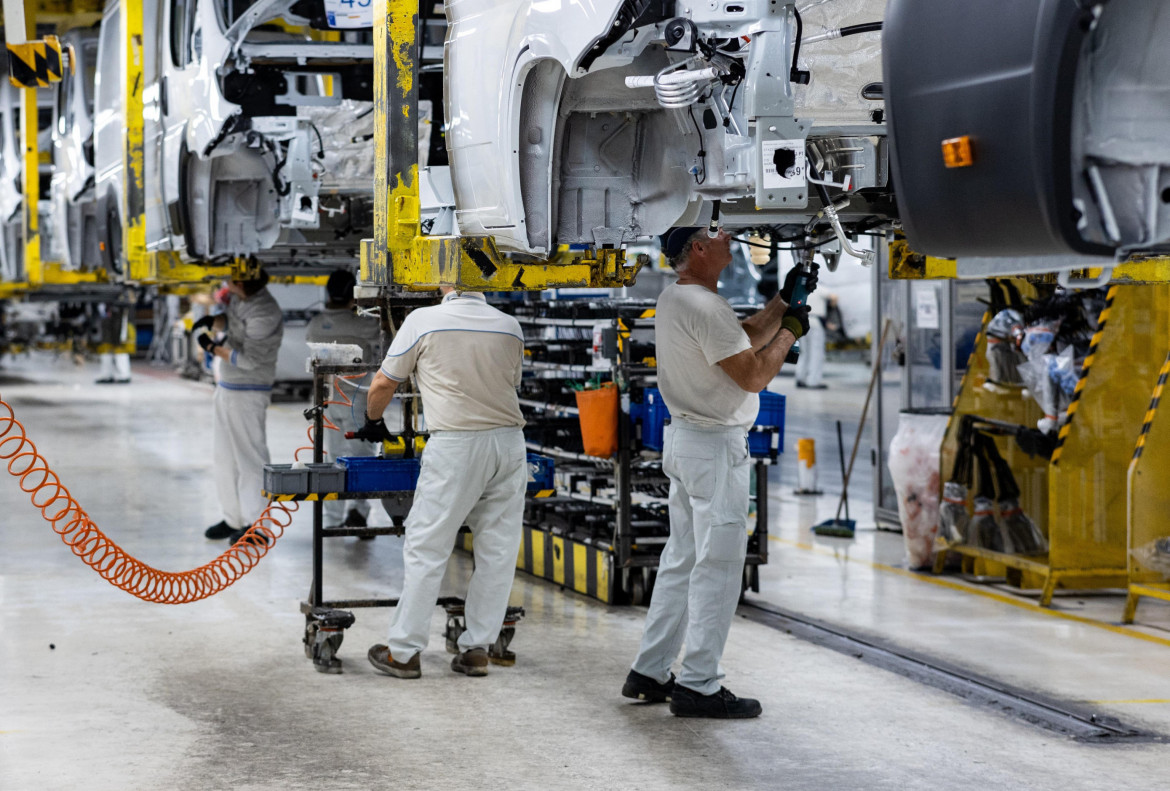Analysis
Italian industry is shrinking, and there’s no plan to stop it
'Urgent interventions are needed to reverse this trend. The 3.3 percent drop in production compared to 2023 is a clear sign of the absence of industrial policies that would be able to breathe life into and revitalize our businesses.'

The bill is coming due for the absence of industrial policies in Italy, ongoing for some 30 years. The official data showing a drop in production for the 18th consecutive month, as recorded by ISTAT, describes a state of affairs already denounced on several occasions by almost all the confederal and local trade unions.
In the face of this reality, the Meloni government is digging in, boasting about the increase in employment and glossing over the terrible numbers coming in from all sectors with the exception of energy, and, in complete disregard of the facts, continuing its rhetoric of free enterprise, as in leaving businesses on their own without any strings attached.
Here are the numbers. For July 2024, ISTAT estimates that the seasonally adjusted index of industrial production decreased by 0.9 percent compared to June. In the average May-July period, there is a 0.4 percent drop in the level of production compared to the previous three months. Now, after accounting for calendar effects, production is down 3.3 percent compared to the same month in 2023.
The monthly seasonally adjusted index was estimated to increase only for the energy sector (+2.3%); while it fell for intermediate goods (-0.7%), capital goods (-1.2%) and consumer goods (-2.3%). The overall trends show a similar picture: increases are recorded only for energy (+1.5%), while there is a decrease for intermediate goods (-2.8%) and an even steeper one for capital goods (-4.2%) and consumer goods (-5.2%).
The particular sectors of economic activity that are managing positive growth are the production of chemical products (+3.9 percent), the food, beverages and tobacco industries (+2.5 percent) and the suppliers of electricity, gas, steam and air (+1.9 percent).
As for downturns, the largest are being seen in the textile, apparel, leather and accessories industries (-18.3%), the automotive industry (-11.4%) – with cars continuing to drag the sector down as Stellantis’s production in Italy plummeted by -29.2% in the first half of 2024 compared to the same period in 2023 – and mining and quarrying (-5.9%).
There is little consolation to be found in the fact that in August, inflation for 2024 came out at an estimated +0.7% in Italy compared to +2.3% in the Euro area. Nor in the fact that, as ISTAT writes, “the Italian economy still appears to be growing in the second quarter, with GDP estimated to show a slight increase (+0.2%).” This is because, as the Institute of Statistics admits, “one must note the low contribution from consumption,” and “the estimates regarding the ability to save are also clearly worsening.” ISTAT concludes: “In Italy, the downturn phase of the industrial production index, also common to other EU countries and particularly notable in Germany, does not seem to be over at this point.”
In the face of this reality, this is all that Giorgia Meloni had to say: “The number of workers is increasing, female employment is increasing, people who want to get involved and invest in their professional skills are increasing. Let’s go forward on the same road, for an Italy that invests in work, growth and its future.” But while the number of employed people in July exceeded 24 million (with no growth, however, for 25-34-year-olds), employment only increased among the self-employed and fell among both permanent and fixed-term employees.
“The data released by ISTAT today are worrying,” said former CISL general secretary Annamaria Furlan, now a PD Senator. “Urgent interventions are needed to reverse this trend. The 3.3 percent drop in production compared to 2023 is a clear sign of the absence of industrial policies that would be able to breathe life into and revitalize our businesses. If industrial growth is not focused on, there is a risk of serious repercussions on employment. We need urgent investment in the ecological and digital transition, and a national plan that would be able to boost the strategic sectors.”
“This country is still standing only thanks to the few NRRP funds that the government manages to spend,” adds Stefano Patuanelli of the M5S, ”and thanks to the long tail of an expansionary period that they have managed to snuff out in every way.” And regarding those billions from the NRRP, the CGIL union is denouncing that so far, the Meloni government has only managed to put to use one-fifth of the estimated 2024 spending under the Plan, “due to the lack of administrative capacity and technical personnel.”
Confcommercio (the Italian General Confederation of Enterprises, Professions and Self-Employment) has also expressed its concern. However, the largest business owners’ association, Confindustria, under its new president Emanuele Orsini, has limited itself to applauding Minister Urso's ideas to halt the EU-level ban on internal combustion engines by 2035 and to revive nuclear power against speculative increases in the cost of energy.
Originally published at https://ilmanifesto.it/industria-in-picchiata-una-crisi-senza-fine on 2024-09-11
